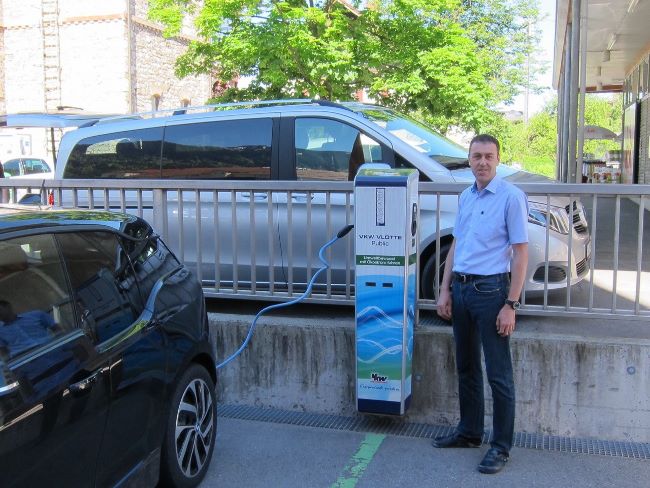The Vorarlberg region is one of the forerunners of the energy transition in Austria. One ambitious goal is to cover the whole energy demand with renewable energy by 2050. This requires support both from the government as well as from the citizens. The mobility system is of major importance for the energy transition and by making mobility eco-friendly, Vorarlberg actively promotes the transition. The local utility Illwerke vkw is mostly owned by the state of Vorarlberg and is therefore one of the main players in the local energy transition. They are supporting the political goals of the region by giving the people an understanding of what it means to become energy autonomous.
The project VLOTTE started in 2008 as a nationally funded model region project to prove the suitability of electric mobility for daily use. Today, VLOTTE is a branch of Illwerke vkw and one of the leading e-mobility competence centres in Europe. This is also the most important reason why Vorarlberg is among the leading e-mobility regions in Europe today. For every 1.000 inhabitants, there are approximately two e-cars, which is twice as much as in the rest of Austria.
To get an insight into the transition process of Vorarlberg, Michael Ornetzeder and Alicia Gutting of the Institute of Technology Assessment at the Austrian Academy of Sciences went on a research trip in mid-May 2017. We started at the vkw Illwerke in Bregenz, where we interviewed experts on the vkw’s own multi-storey car park, which began as a pilot study on load management and intelligent car-sharing. We got some new insights into the quite complex system the vkw is using for their own e-car pool and the employees’ usage of it.
With this new information in mind, we went to the building contractor firm Tomaselli Gabriel Bau in Nenzing the following day. Tomaselli Gabriel Bau was the first company in Vorarlberg to transform their diesel-powered car pool to an electric one. Today, they have fifteen VW E-Golfs and Renault Zoës at their disposal. Most of the cars are assigned to specific employees, who use the car to carry out their daily business at construction sites, for meeting with clients, as well as for travelling between home and work. This change was made possible through a contracting agreement between Illwerke vkw and Tomaselli Gabriel Bau. Tomaselli Gabriel Bau decided to get e-cars for their fleet and contacted the utility as they did not only want wallboxes in their underground parking, but also a fast charging station.
Philipp Tomaselli, the owner of the company, told us that they probably would not have switched to e-cars without the help of the vkw, as the setup of the infrastructure would have been too costly. Another reason was the slight fear of being stuck due to long loading times or limited battery capacity. Fortunately, the practice showed that the fear was arbitrary. Today, Tomaselli Gabriel Bau has had an e-fleet for one year and the whole transition went smoothly.

Jürgen Melk of Tomaselli Gabriel Bau in front of one of the charging stations. Photo: Michael Ornetzeder
As we now got to see both sides of our case study, we can start with the analysis of the implementation and the integration of e-mobility into the existing electricity grid in Vorarlberg.
/ Alicia Gutting, ITA
